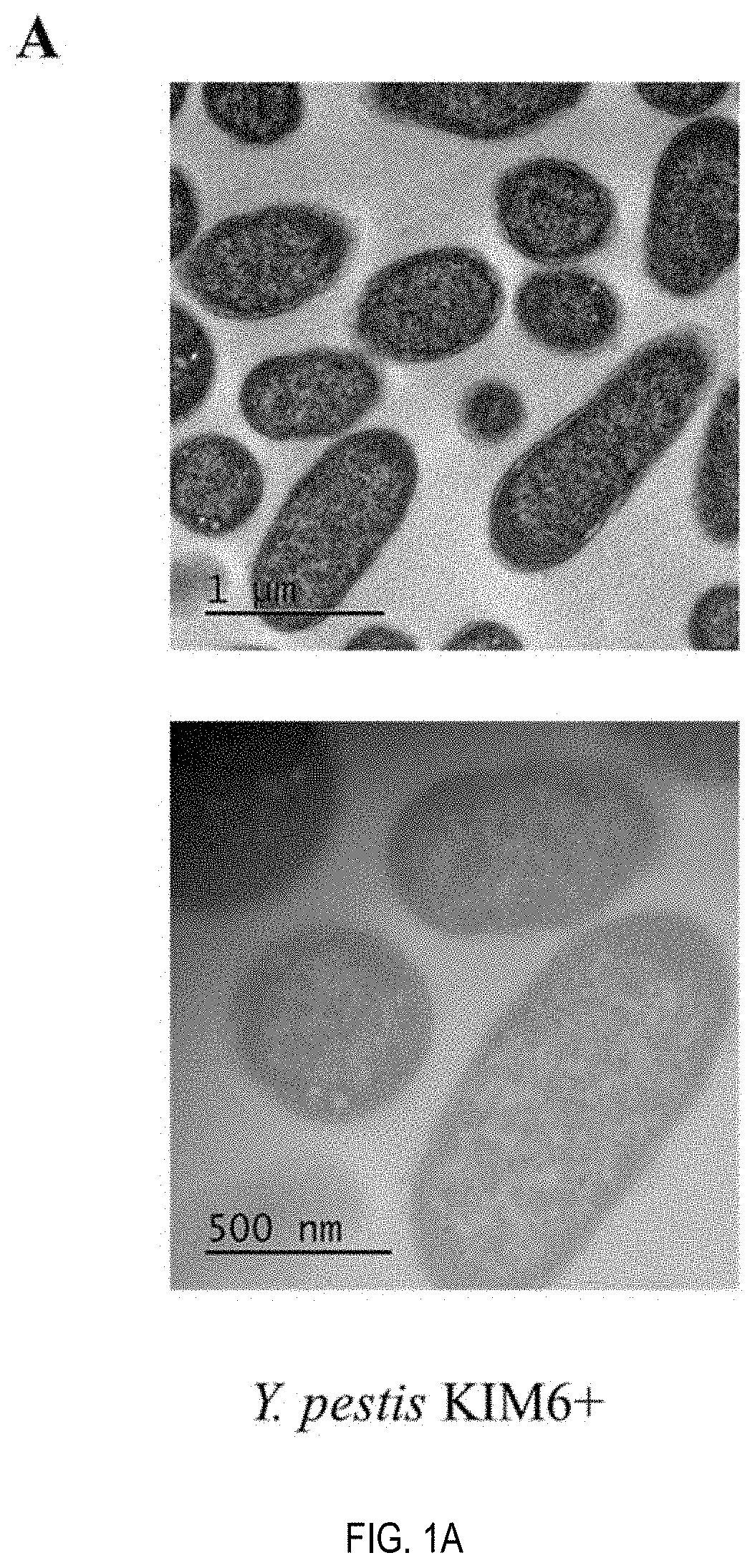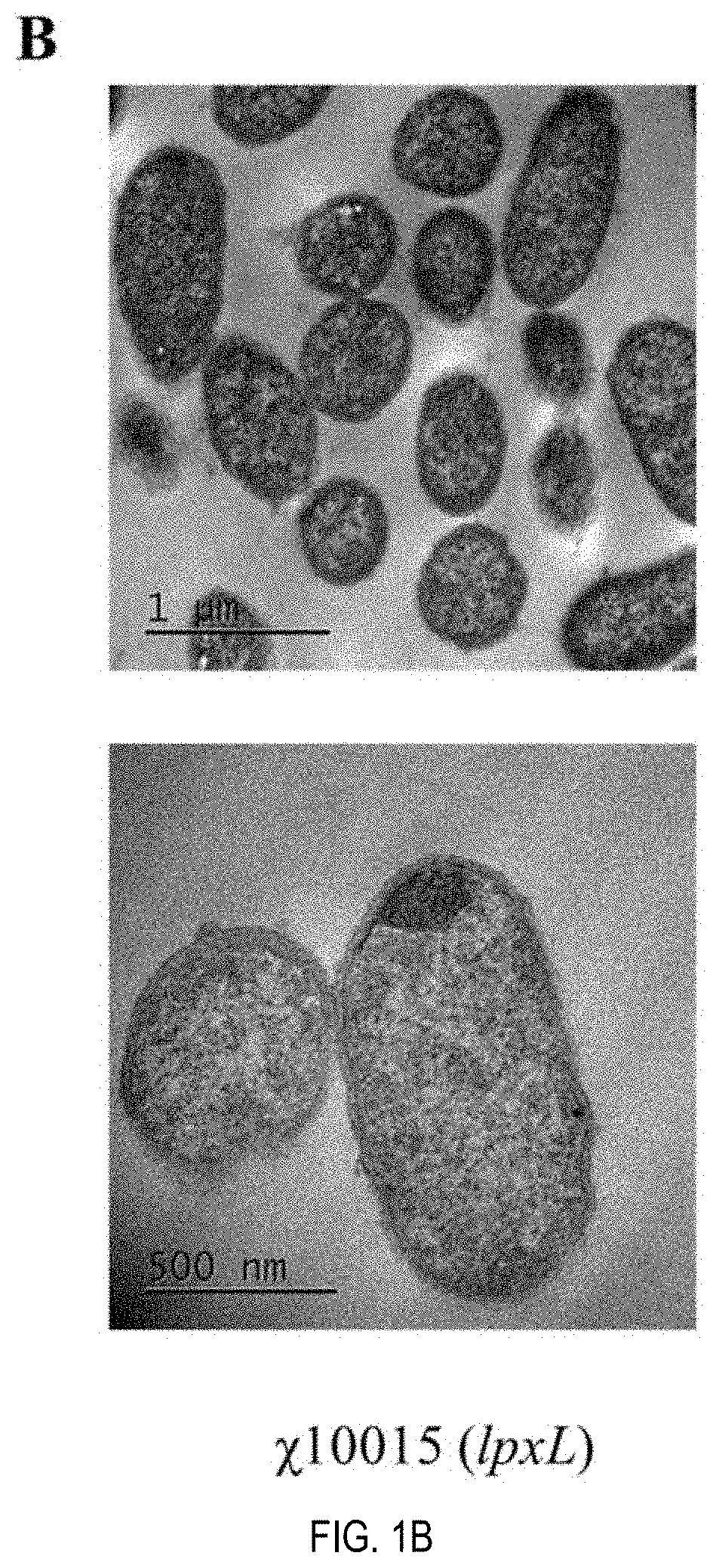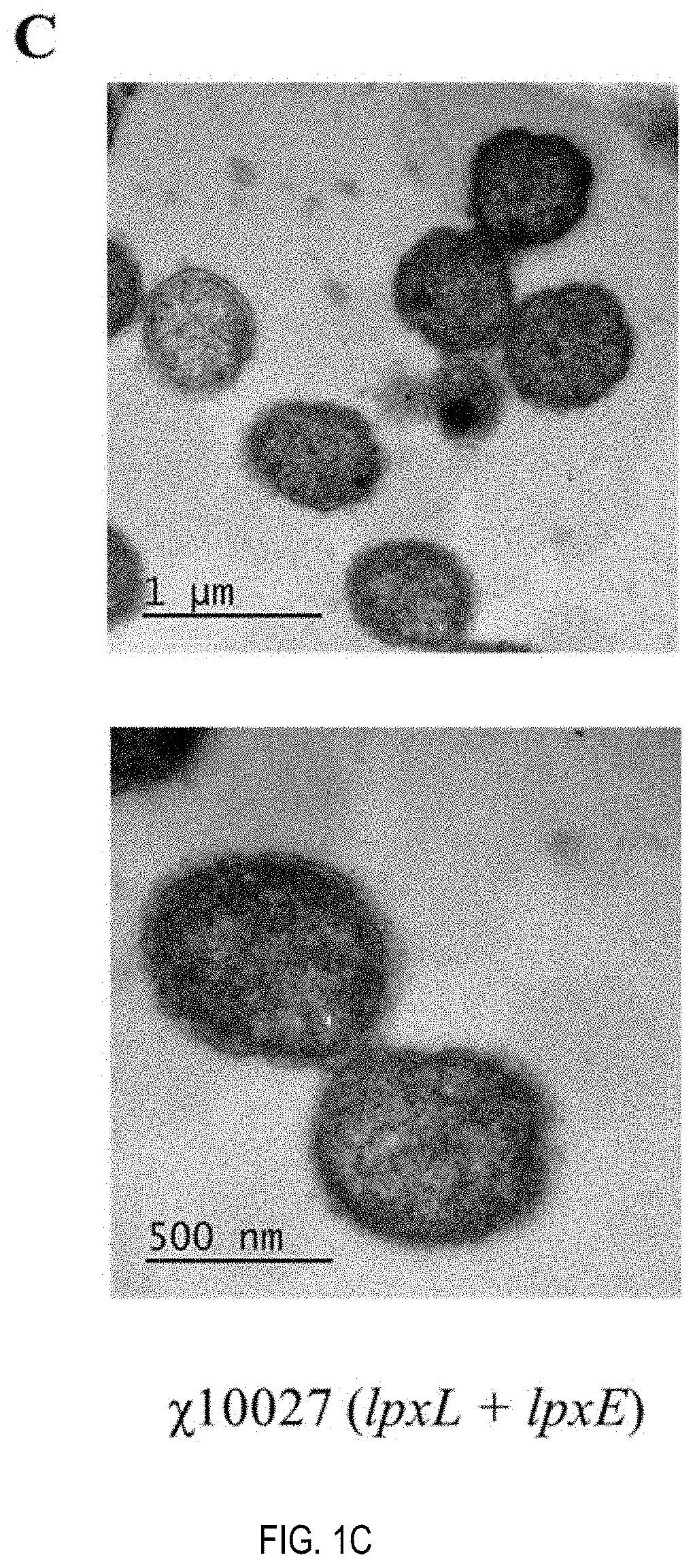Self-adjuvanting yersinia outer membrane vesicle as a vaccine against plague, anthrax and pseudomonas infection
a technology of outer membrane and yersinia, which is applied in the field of genetically engineered bacteria, can solve the problems of insufficient protection of subunit vaccines, insufficient protection of insufficient vaccines based on lcrv and f1 antigens to guarantee long-term defense against plague in humans
- Summary
- Abstract
- Description
- Claims
- Application Information
AI Technical Summary
Benefits of technology
Problems solved by technology
Method used
Image
Examples
example 1
[0071]Materials and Methods
[0072]Bacterial strains, plasmids, culture conditions, and molecular operations. All bacterial strains and plasmids used in this study are listed in Table 1 and Table 2 below. All bacterial cultures and molecular procedures as in the Supplementary Information below.
[0073]
TABLE 1Strains and plasmids used in this studyStrain or PlasmidGenotype or relevant characteristicsStrainsE. coli χ6212F−λ−ϕ80 Δ(lacZYA-argF) endA1 recA1 hsdR17 deoR thi-1glnV44 gyrA96 relA1 ΔasdA4E. coli χ7213thi-1 thr-1 leuB6 fhuA21 lacY1 glnV44 ΔasdA4 recA1 RP4 2-Tc::Mu [λpir]; KmrKIM6+ (pCD1Ap)pCD1Ap, pMT1, pPCP1, Pgm+KIM6+pCD1− pMT1, pPCP1, Pgm+χ10015ΔlpxP:: PlpxLlpxLχ10027ΔlpxP:: PlpxLlpxL ΔlacZ:: PlpplpxEYPS1Δasd12 KIM6+YPS2Δasd12 χ10015YPS3Δasd12 χ10027YPS4Δasd12 Δymt50 KIM6+YPS5Δasd12 Δ ymt50 χ10015YPS6Δαsd12Δ ymt50 χ10027YPS7Δasd12 Δymt50 KIM6+ pPCP1−YPS8Δasd12 Δymt50 χ10015 pPCP1−YPS9Δasd12 Δymt50 χ10027 pPCP1−PlasmidspRE112Suicide vector, Cmr, mob− (RP4)R6K ori, sacBpYA3342Asd+...
example 2
[0117]Construction of an Asd+ plasmid containing genes encoding protective antigens from both Y. pestis and B. anthracis.
[0118]Delivering antigens by T2SS into the periplasm space of bacteria could increase the antigens in lumen of OMVs, significantly increasing antibody responses and protective immunity. As mentioned above, protective antigen (PA) of anthrax toxin encoded by pagA is the primary component of human anthrax vaccine. So, the same strategy was applied to construct an Asd+ plasmid to synthesize and secrete PA of B. anthracis in the heterologous Yptb strain. The pagA gene fragment removing the N-terminal signal sequence is codon-optimized to favor for expression in Y. pseudotuberculosis. In addition, the codon-optimized pagA gene (PAop gene) has mutations to eliminate proteolytic cleavage sites, such as a furin site by replacing RKKR167 with SNKE167 and a chymotrypsin site via deletion of FF314 and a substitution at position 308 (E308D), which enhances the stability of t...
example 3
[0125]The PcrV forms a ring structure at the tip of the needle of Type three secretion system (T3SS) in PA and is essential for translocation of the effectors and bacterial pathogenicity. PcrV is a conserved protein among different serotypes of PA isolates and a promising antigen candidate. Immunization with recombinant PcrV or adaptive transfer of anti-PcrV antibodies offered significant protection against lethal PA infections. In addition, iron is an indispensable nutrient for replication of almost all bacteria. Several iron acquisition systems are used by PA to obtain iron from mammalian hosts during infection and play an important role in bacterial virulence. The hitA (PA4687), hitB (PA4688), and others in PA are involved in iron transportation and associated with bacterial virulence. A study showed immunization with ferric iron-binding periplasmic protein HitA afforded protection against PA infection in mice. Therefore, immunization with OMVs delivering heterologous PcrV and Hi...
PUM
| Property | Measurement | Unit |
|---|---|---|
| temperature | aaaaa | aaaaa |
| volumes | aaaaa | aaaaa |
| pH | aaaaa | aaaaa |
Abstract
Description
Claims
Application Information
 Login to View More
Login to View More - R&D
- Intellectual Property
- Life Sciences
- Materials
- Tech Scout
- Unparalleled Data Quality
- Higher Quality Content
- 60% Fewer Hallucinations
Browse by: Latest US Patents, China's latest patents, Technical Efficacy Thesaurus, Application Domain, Technology Topic, Popular Technical Reports.
© 2025 PatSnap. All rights reserved.Legal|Privacy policy|Modern Slavery Act Transparency Statement|Sitemap|About US| Contact US: help@patsnap.com



